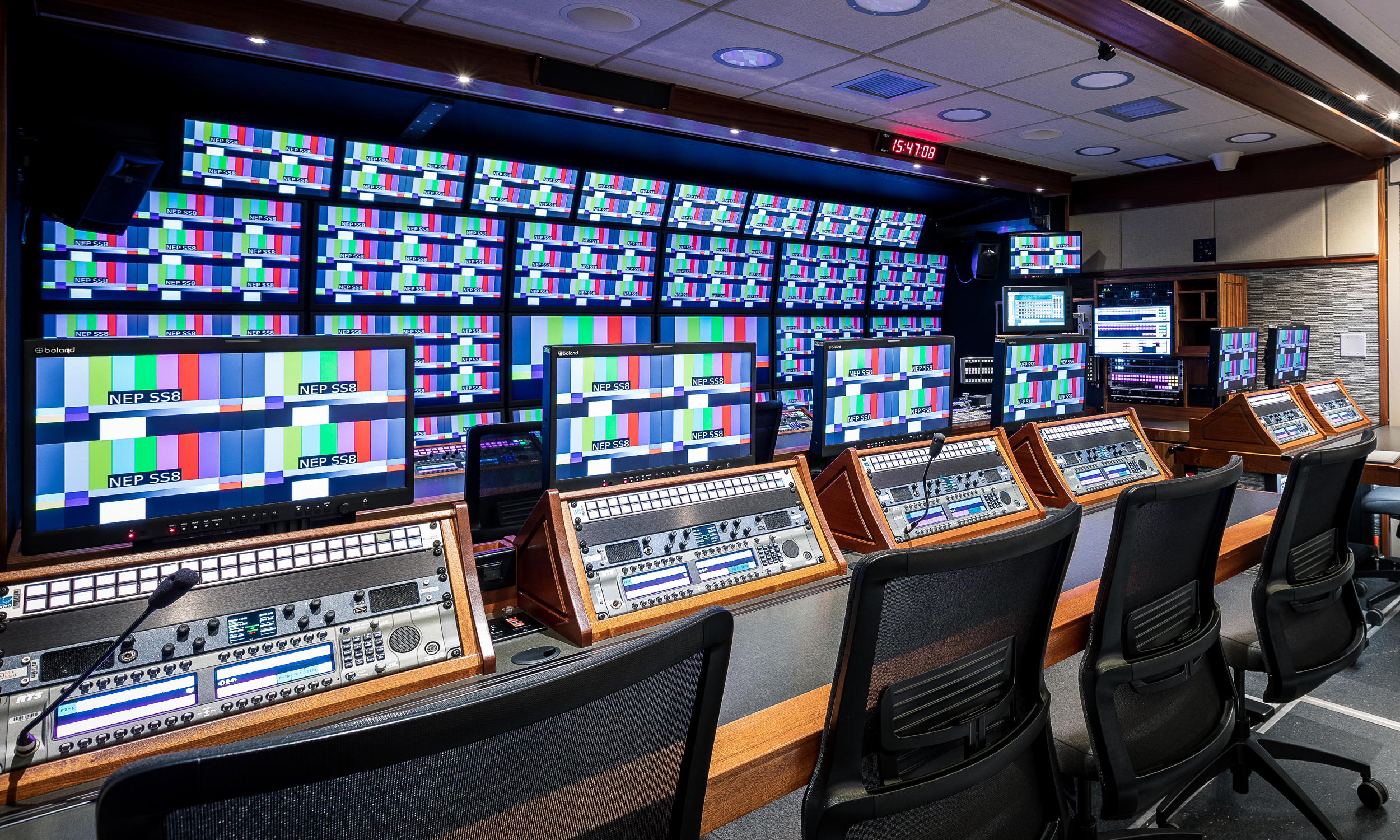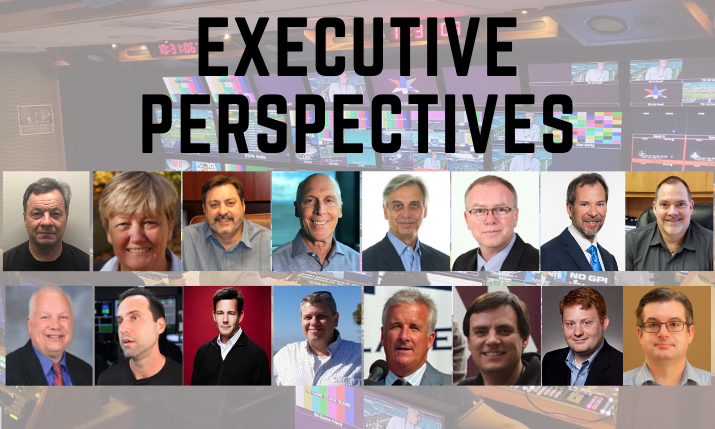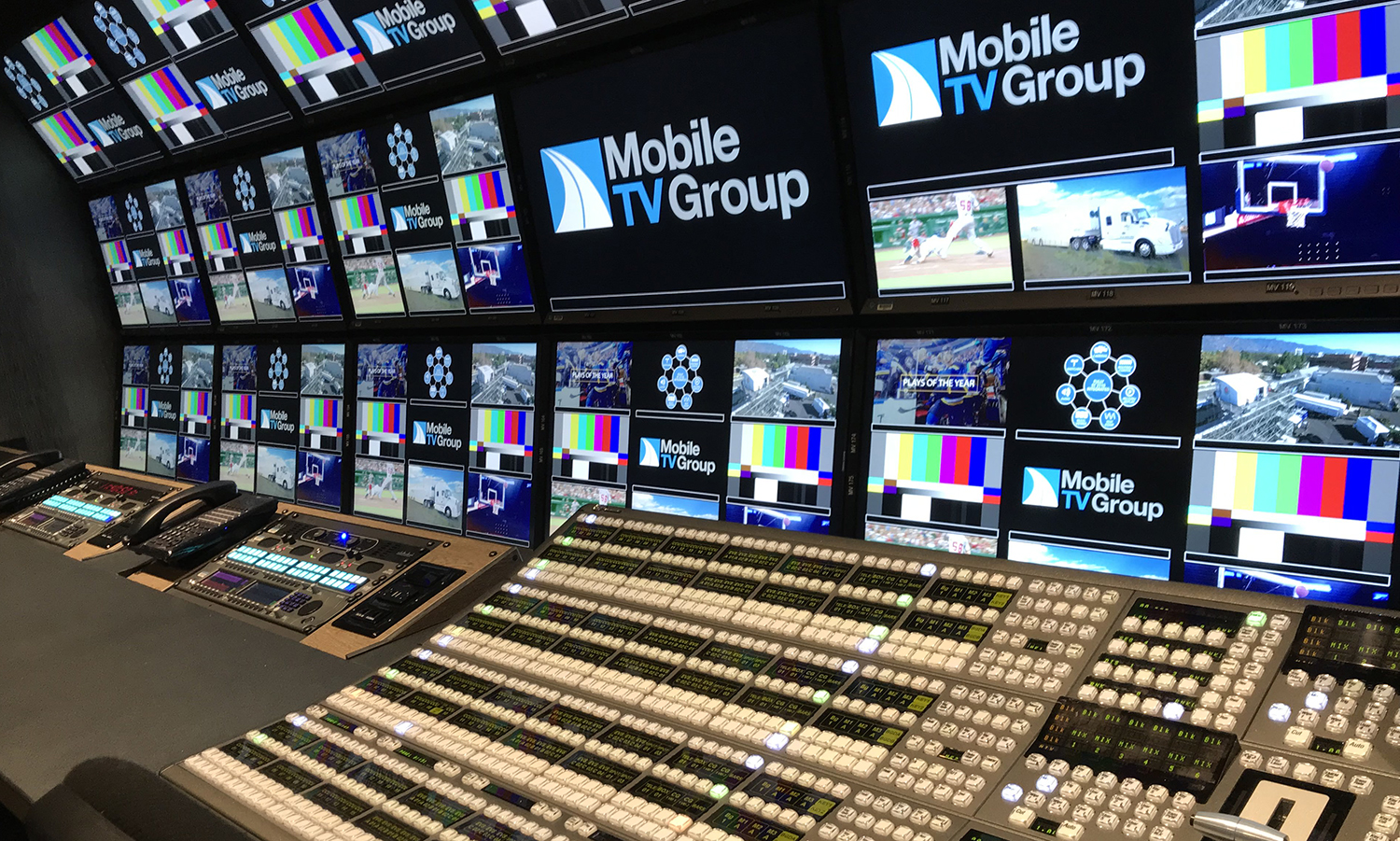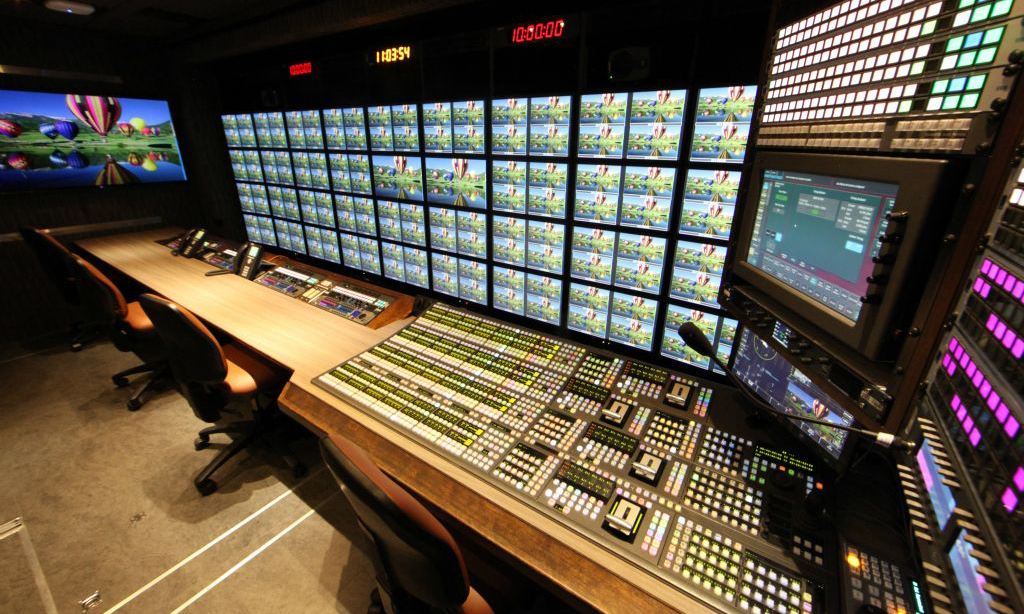2020 Executive Perspectives, Part 2: Mobile-Production Leaders Sound Off on the State of Technology
IP, 4K, HDR, 1080p top the current list of rapidly evolving challenges
Story Highlights
The mobile-production business is booming, with more live sports productions last year than ever before. But truck providers face a host of challenges as technology evolves at a breakneck pace. The SMPTE ST 2110 suite of standards for IP-based equipment and infrastructure will lay the groundwork for the future of live production — including the increasing number of 4K, HDR, and 1080p sports productions — but will also require costly up-front investment. SVG sat down with industry leaders to discuss the current state of production-truck technology and where it’s headed.
Here are the executives we spoke with:
- Donald Adydan, F&F Productions
- Mary Ellen Carlyle, Dome Productions
- Len Chase, CSP Mobile Productions
- Philip Garvin, Mobile TV Group
- Michael Harabin, Gravity Media
- Mike Johnson, Dome Productions
- Glen Levine, NEP Group
- Marc Orgera, F&F Productions
- Chris Priess, Mediapro
- Mitch Rubenstein, Ross Mobile Productions
- Brad Sexton, Live Media Group
- Chad Snyder, Lyon Video
- Pat Sullivan, Game Creek Video
- Jason Taubman, Game Creek Video
- Dan Turk, NEP Group
- Peter Wehner, Mobile TV Group
The responses below were submitted in Q4 2019 for this year’s SVG Mobile Production Yearbook and cover technology inside production trucks. CLICK HERE for Part 1 of Executive Perspectives, focused on the business and commercial issues facing the mobile-production industry.
What technical challenges do you see as the most vexing for your engineering team?
Carlyle: The one we just encountered. And we’re just starting to find that, as technology develops and we start buying [Sony HDC-]4300 cameras and [Sony HDC-]5500 cameras, the venues aren’t keeping up. They’re all triax, and we’re now finding that that’s an issue going forward. Who is going to change all these venues: the vendor? the broadcaster? the venue?
Garvin: We don’t view “technical challenges” as vexing. On the contrary, challenges are opportunities. The major challenge is the transition to end-to-end native-IP systems, including the implementation of IS-04 and IS-05. Luckily, with two IP [SMPTE] 2110 mobile units recently launched, we have the right people and manufacturer relationships to properly think it through and execute.
Levine: New challenges are here today in the world of IP. New [SMPTE] 2110 IP solutions are of great benefit to the future of our industry. Don’t be fooled, it’s not simple. NEP’s skilled engineering talent from around the globe continues to impress me as we overcome challenges every day.
Priess: The transition to a complete IP workflow is one that we are certainly anticipating, given all the benefits. However, until there are more manufacturers onboard with a consistent standard, we are not quite ready to take the leap.
Snyder: It is great that equipment manufacturers build expanded capability into equipment, but getting licensed for specific capabilities takes a long time when it should be a straightforward process.
Sullivan: Dealing with the different and new challenges created by SMPTE 2110.
IP-based trucks are continuing to be deployed more frequently. What is your company’s approach to IP vs. SDI?
Adydan: We have built our last non-IP mobile unit, and IP is the future of [the industry], as [is] 12G distribution. Both are being evaluated, though we still have serious concerns about the timing between video and embedded audio.
Johnson: I wouldn’t say we’re very aggressive, but we’re calculated about it. We’ve taken a look at building that IP solution, but we’ve found that it’s an interim kind of solution because of the cost of doing it with a lot of gateways. If you have a lot of gateways, that means that you’re not really taking advantage of IP. So we have mostly held off, [with the exception of] a small IP truck that we built to learn from and develop best practices. IP is a big leap, and I think it comes with a little bit of risk element, but IP is getting better every year. We look forward to working in that space, and, hopefully, our next truck will be IP.
Rubenstein: Ross MP will continue to follow industry trends and needs, IP-based solutions being one of them, to increase our capabilities and take on higher-level productions. We have plans for an IP-based truck coming in 2020.
Snyder: Lyon has not deployed a project that requires IP technology. We discussed utilizing IP technology on our project in 2019, but the challenges did not make sense for the project. In addition, our vendors have difficulty interoperating in IP and HDR.
Taubman: Game Creek Video is all-in on the IP future. Our four latest major truck builds have been IP, and all of the new builds we have coming up will be end-to-end IP utilizing the SMPTE 2110 standard. By the football season in 2020, Game Creek will have eight IP trucks on the road, and we will continue to adopt IP connectivity on edge devices as they become available, and compatible workflows are demonstrated. We will, of course, continue to maintain legacy SDI connectivity for the foreseeable future, as the bulk of our fleet and inventory of edge devices will remain SDI-connected.

NEP has rolled out several IP-based mobile units in recent years, including SuperShooter 8 in October.
Turk: We look at each project with what technology makes the most sense. As the IP technology and standard have become more mature, it is getting easier. There is less conversion gear needed. We mostly are doing IP systems because it saves weight and is more distributed in any truck or case.
Wehner: All of our new mobile-unit builds are IP and [based on] SMPTE ST 2110.
Do you think your vendors are where they need to be with respect to the transition to IP-compatible products?
Adydan: Both [IP and HDR are] a moving target. Vendors are constantly changing schemes as new challenges arise. A company must stay in close communication with its vendors to feed back critical situational information.
Johnson: I would say, by and large, they have the core base solutions, but I think that IP is going to require some time to [mature]. [For example, with SDI], we could very easily switch between NTSC frame rate and PAL frame rate. But, on the IP truck, that hasn’t been so easy. Those are things that we just have come to expect [from products] and we need to be able to do. So are vendors completely ready or where they’d like to be? Probably not. But I’m sure they’re working feverishly to get caught up.
Taubman: The SMPTE 2110 standard is still very new, and vendor interoperability is still a major hurdle in IP systems. Across the board, we found vendors are working as fast as they can to implement SMPTE 2110 in their products, but we’re still missing the standards to tie it all together. We’re looking forward to integrating NMOS IS-04/IS-05 discovery, registration, and connection management as it becomes a published standard — hopefully, in the near future.
Turk: We are getting closer to IP being easier. There are still many control hurdles that the industry needs to get solved to make the IP systems as flexible as SDI.
Wehner: No. The manufacturers need to work on interoperability and compatibility.
What about HDR-compatible products?
Taubman: By itself, HDR is fairly mature, and an HDR-native production is easy to accomplish with current tools. A hybrid HDR/SDR production is much more complex, and we’re in the middle of developing workflows in conjunction with many of our vendors and clients to deliver a quality SDR product derived from native HDR acquisition to the majority of viewers.
Turk: With the new LUTs, HDR is getting easier, but we are still missing automatic setup. Engineers and operators must manually change settings when an HDR signal is in a monitor. Both technologies are going in the right direction and getting easier with each new version of software.
How is your engineering team dealing with the need to understand IP as well as baseband workflows?
Adydan: Engineers are becoming data-systems–certified. A regular exchange of information is conducted amongst the engineering team.
Taubman: We’re transitioning rapidly from traditional broadcast infrastructures to infrastructures that are starting to look more like data centers in our trucks. We’re needing to define new IP-centric skill sets and find ways to train our staff to fully understand and take advantage of our new hybrid baseband/IP environment. This is probably our single biggest challenge at the moment.
Turk: We have created an IP class that engineers are going through before they get a new IP truck. We also try to make smart decisions with pairing the correct people to get experience and IT on an IP truck.
Wehner: Attending classes and hands-on experience.
As IP networks become more commonplace at truck compounds, is cybersecurity becoming more of a concern? How are you addressing the issue of compound security in an IP age?
Adydan: Cybersecurity is a vital concern. At this point, critical systems are isolated from the outside world. Research on switching portals with cyber sniffing is ongoing.
Taubman: Cybersecurity is certainly top-of-mind for us. At the moment, most of our media-streaming IP networks are islands within our trucks, but we are starting to develop systems that will bridge from truck to truck and, eventually, truck to studio with IP streaming technology. As we start to extend these IP networks in new ways, we’re working with all of our vendors to develop and implement best practices around securing our IP networks.
Turk: Cybersecurity is thought about in every build. We are keeping the video network separate from control or internet. Also, [we] keep to standard IT security procedures.
Are you planning for the potential rise of 4K and HDR? If so, how? What are the primary technical challenges related to 4K HDR production, and what pieces of equipment must be upgraded in order to serve these shows?
Adydan: The company’s latest mobile unit has been built to service 4K as well as HDR demands. The main concern is the ability to transfer appropriate color-gamut and contrast-ratio information. Parity must exist from the capture through processing to the display process. The ability to adjust to new HDR profiles is the biggest concern. This affects the entire chain but is most notable in the capture and display phases.
Johnson: We’re three years into servicing 4K, and, even in the very early days, we were looking closely at HDR. We learned very quickly that 4K is very achievable, but the HDR is going to take a lot more of an infrastructure change because it does impact the entire [ecosystem] from production to customer delivery at the home. The vendors are aligning to provide the right toolsets and advanced capabilities to help us evaluate the quality and the consistency of the HDR while maintaining a good SDR. We cannot compromise the SDR show for the sake of HDR. So that does increase the challenge level. I would say we still have some hurdles to get over in that space, but it’s great that so many [vendors] are jumping in. That pushes us all to get there.
Snyder: We see 4K and HDR productions being done best in IP. In our opinion, proper IP design should be inclusive of 4K HDR signal paths, possibly with software provisions for HDR.
Taubman: A big part of our push to move quickly to IP is the need to develop systems that can produce native-4K content at the scale required by our key clients — a task that is well beyond the capability of currently deployable baseband systems. HDR comes along for the ride as we develop these infrastructures, but all of our purchasing around image acquisition, replay, and signal processing is driven by the need to pave the road to 4K HDR productions.
Turk: Every project, we have a 4K plan. Today, this will require taking the [equipment] levels down. As the IP technology continues to grow to higher bandwidth, this will go away, and we will be able to do the same-size show in 4K or 1080p.
Wehner: We’ve been providing 4K and 4K HDR to our customers for several years.
Is there a specific technology (or technologies) that clients are demanding more these days?
Rubenstein: Much more demand in 1080p.
Snyder: Our clients demand more of everything: more cameras/lens, EVS, fiber, intercom, AV fiber connectivity, monitors, cable, space. Most of our clients grow their event scale from the time the project is “agreed to” during the preproduction timeline.
Taubman: Currently, we’re seeing a lot of interest in producing 1080/60p HDR content to deliver and distribute in HD SDR as well as upconvert to 4K. Additionally, our clients are pushing hard to deploy HFR image acquisition in as many camera positions as possible.
Wehner: Super-slo-mo along with larger infrastructure.



